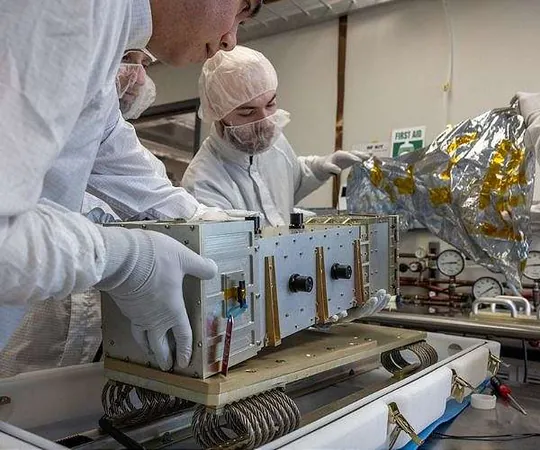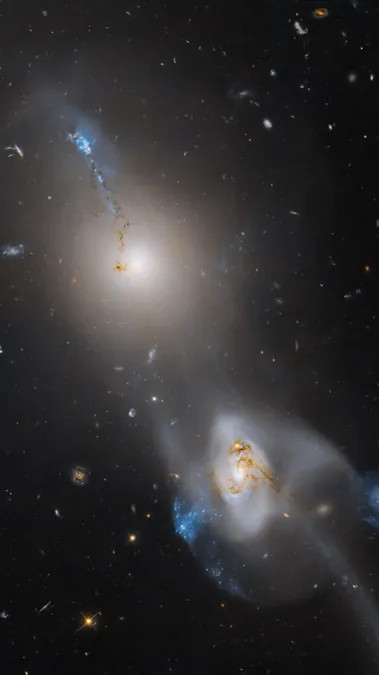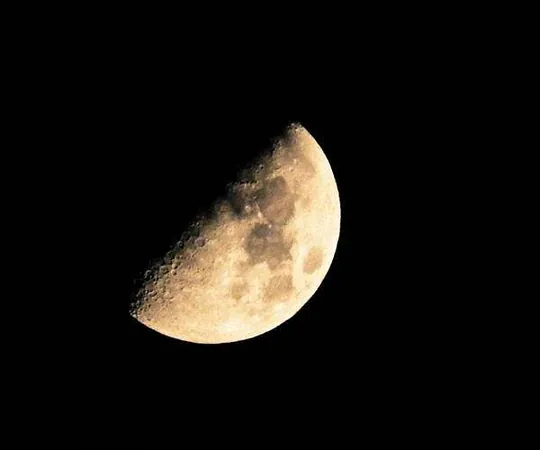
NASA's Revolutionary LEXI on a Mission to Uncover Earth's Magnetic Secrets!
2025-01-05
Author: Nur
NASA's Revolutionary LEXI on a Mission to Uncover Earth's Magnetic Secrets!
In an exciting development for space exploration, NASA is gearing up to send an innovative X-ray imager known as the Lunar Environment Heliospheric X-ray Imager (LEXI) to the Moon. This pioneering mission is part of NASA's Artemis program and aims to capture groundbreaking global images of Earth’s magnetosphere, the magnetic shield that protects our planet from harmful solar radiation.
Scheduled to launch from Kennedy Space Center in Florida no earlier than mid-January aboard Firefly Aerospace’s Blue Ghost Lander, LEXI is one of ten payloads included in NASA’s Commercial Lunar Payload Services (CLPS) initiative. This mission is not just about lunar exploration; it's a vital step in understanding how Earth interacts with space weather driven by solar activity.
Once LEXI touches down on the lunar surface, it will power up and turn its gaze back to Earth. For six continuous days, this high-tech instrument will collect images of low-energy X-rays emitted as solar winds collide with Earth’s magnetic field. This unprecedented view of the magnetopause—the outer edge of our magnetosphere—will provide invaluable insights into how this protective barrier reacts to solar storms.
Dr. Brian Walsh, a space physicist at Boston University and principal investigator for LEXI, emphasized the mission's significance, stating, “We’re trying to get this big picture of Earth’s space environment. This will be science that you can see.” Unlike previous fragmented observations, LEXI will offer a comprehensive and unified look at the dynamics of our magnetosphere.
Expect to see “the magnetosphere breathing” in and out, explains Dr. Hyunju Connor, NASA’s lead for LEXI. The instrument aims to observe the magnetosphere’s response to varying solar wind strengths—contracting when solar activity peaks and expanding when conditions calm. This research could be critical in limiting the potential damages that solar storms can inflict on satellites and electrical grids on Earth.
Moreover, LEXI will be watching for magnetic reconnection events—phenomena where the magnetic lines of force from the magnetosphere merge with those carried by the solar wind, resulting in energetic particles streaming toward our planet’s poles. Understanding these interactions could help scientists unravel mysteries about their occurrence and behavior.
Previous solar particles have produced breathtaking auroras but pose risks to technology, making LEXI's insights invaluable for safeguarding our infrastructure. Connor noted, “By understanding how nature behaves, we can help protect our infrastructure in space.”
Interestingly, this isn’t LEXI’s maiden mission. Originally constructed as an experimental instrument called STORM in 2012, it gathered X-ray images from a sounding rocket before being retired to a display case at NASA’s Goddard Space Flight Center. Upon NASA’s request for quick and budget-friendly CLPS projects, Walsh and his team refurbished the old instrument and readied it for a mission that promises to yield rich scientific data about our planet’s protective layers.
Through the CLPS initiative, NASA is thriving in a partnership with commercial industries, aiming for sustainable lunar exploration. With an eye on the future, NASA not only hopes to lead in lunar deliveries but also to set the stage for collaborative ventures that will take humanity further into space.
Get ready as NASA's LEXI prepares to unveil the hidden wonders of Earth's magnetosphere and revolutionize our understanding of space weather dynamics! Stay tuned for more cosmic revelations from this trailblazing mission!




 Brasil (PT)
Brasil (PT)
 Canada (EN)
Canada (EN)
 Chile (ES)
Chile (ES)
 Česko (CS)
Česko (CS)
 대한민국 (KO)
대한민국 (KO)
 España (ES)
España (ES)
 France (FR)
France (FR)
 Hong Kong (EN)
Hong Kong (EN)
 Italia (IT)
Italia (IT)
 日本 (JA)
日本 (JA)
 Magyarország (HU)
Magyarország (HU)
 Norge (NO)
Norge (NO)
 Polska (PL)
Polska (PL)
 Schweiz (DE)
Schweiz (DE)
 Singapore (EN)
Singapore (EN)
 Sverige (SV)
Sverige (SV)
 Suomi (FI)
Suomi (FI)
 Türkiye (TR)
Türkiye (TR)
 الإمارات العربية المتحدة (AR)
الإمارات العربية المتحدة (AR)